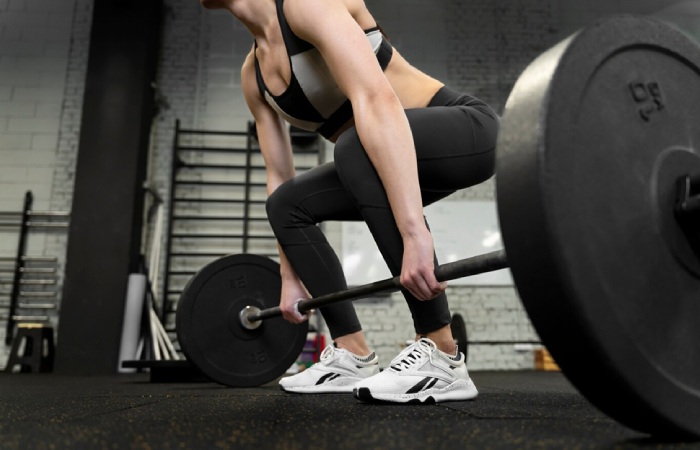The perpetual discourse within the cycling community revolves around the intricate relationship between weight training and cycling performance. Cyclists worldwide are united by a common goal: to cultivate a comprehensive skill set that strikes an optimal balance between strength and endurance, recognizing the impact of weight training on cycling performance. This delicate equilibrium is deemed crucial for achieving peak speed and power on the bike, prompting an ongoing debate on the role of weight training. In this comprehensive exploration, we delve into the scientific foundations, the need for balance, the role of sport-specific exercises, the importance of periodization, and the potential pitfalls of improper integration.
Table of Contents
The Science Behind Strength and Speed
Cycling has traditionally been synonymous with cardiovascular prowess, emphasizing endurance and aerobic capacity. However, contemporary perspectives suggest that the incorporation of weight training into cycling routines can yield substantial advantages. One primary benefit is the enhancement of muscular strength, serving as a stable foundation for generating power during sprints and climbs. Contrary to prevalent concerns regarding bulkiness, a well-designed weight training program places emphasis on lean muscle development and functional strength. This approach not only complements cycling speed but actively synergizes with it, dispelling the misconception that weight training hinders performance.
Finding the Right Balance
The optimization of weight training benefits lies in striking a delicate balance between strength training and cycling-specific workouts. Cyclists are encouraged to adopt a periodization approach, a systematic method of organizing training into distinct phases throughout the annual cycle. This involves alternating between periods of intensive weight training and focused cycling-specific exercises. By doing so, cyclists can strategically prioritize different aspects of their fitness, ensuring a holistic approach that optimizes both strength and cycling performance.
The periodization model typically consists of three main phases: the preparatory or off-season phase, the competitive phase, and the transition or rest phase. During the off-season, cyclists place a significant emphasis on building strength through weight training. This is the time to address weaknesses, build a solid foundation, and develop the strength required for the upcoming competitive season.
The Role of Sport-Specific Exercises

Not all weight training exercises are created equal when it comes to enhancing cycling performance. The emphasis should be on sport-specific exercises that closely mimic the physical demands of cycling. Compound exercises, such as squats and deadlifts, are particularly valuable as they engage multiple muscle groups simultaneously. These exercises replicate the complex motor patterns and muscle coordination required in cycling, contributing to a more efficient and powerful pedal stroke.
Core strength emerges as a pivotal factor in the symbiotic relationship between weight training and cycling. A strong core contributes to overall stability on the bike, aids in maintaining balance, and supports an aerodynamic cycling position. Consequently, tailoring weight training programs to include exercises that specifically target the core ensures that the strength gained translates directly into improved cycling performance.
Periodization and Cycling Goals
Periodization is a critical aspect of effective training, allowing cyclists to adapt their focus based on the specific goals of each training phase. In the preparatory phase, the primary objective is to build a foundation of strength through weight training. This involves incorporating a variety of exercises to target different muscle groups, with an emphasis on progressively increasing resistance to stimulate muscle adaptation.
As the competitive season approaches, the training focus shifts towards cycling-specific workouts. This phase involves higher-intensity interval training, simulated race scenarios, and hill climbs to fine-tune endurance and power. The integration of weight training during this period may involve a reduction in volume but an increase in intensity to maintain strength gains while accommodating the demands of cycling-specific training.
The Pitfalls of Improper Integration
While the advantages of weight training for cyclists are clear, improper integration into a cycling routine can lead to fatigue, overtraining, and compromised performance. Overtraining is a significant concern, whether it stems from excessive cycling or intensive weight training. The risk of injury increases when the body is pushed beyond its capacity for recovery.
Fatigue resulting from improper integration can manifest in various ways, such as decreased performance, increased perceived effort, and a higher susceptibility to injuries. It is crucial to recognize the signs of fatigue and adjust training accordingly. Rest and recovery are integral components of any training program, and neglecting these aspects can hinder long-term progress and lead to burnout.
Final Thoughts
The delicate interplay between weight training and cycling holds the key to unlocking new levels of speed, power, and overall success on the road. By embracing a well-structured training program that harmonizes both elements, cyclists can build strength, improve endurance, and elevate their performance. As the cycling community continues to explore the synergies between strength training and cycling, riders are poised to redefine their limits and reach unprecedented heights in their cycling journey.

